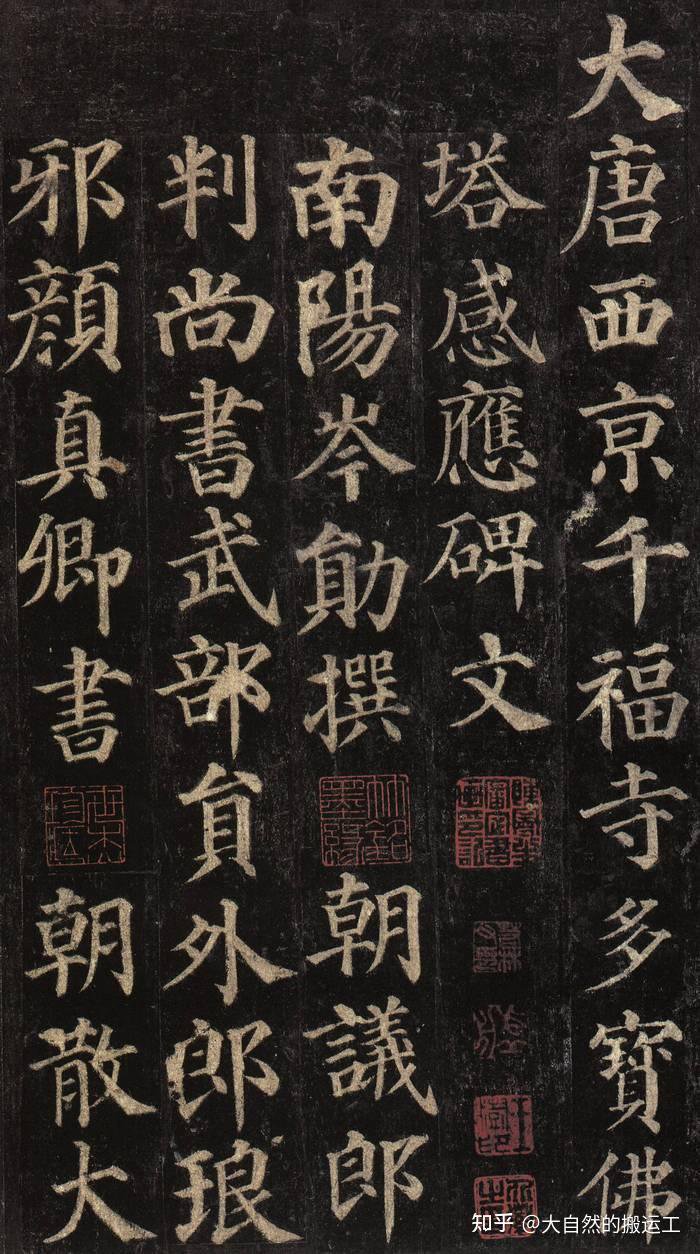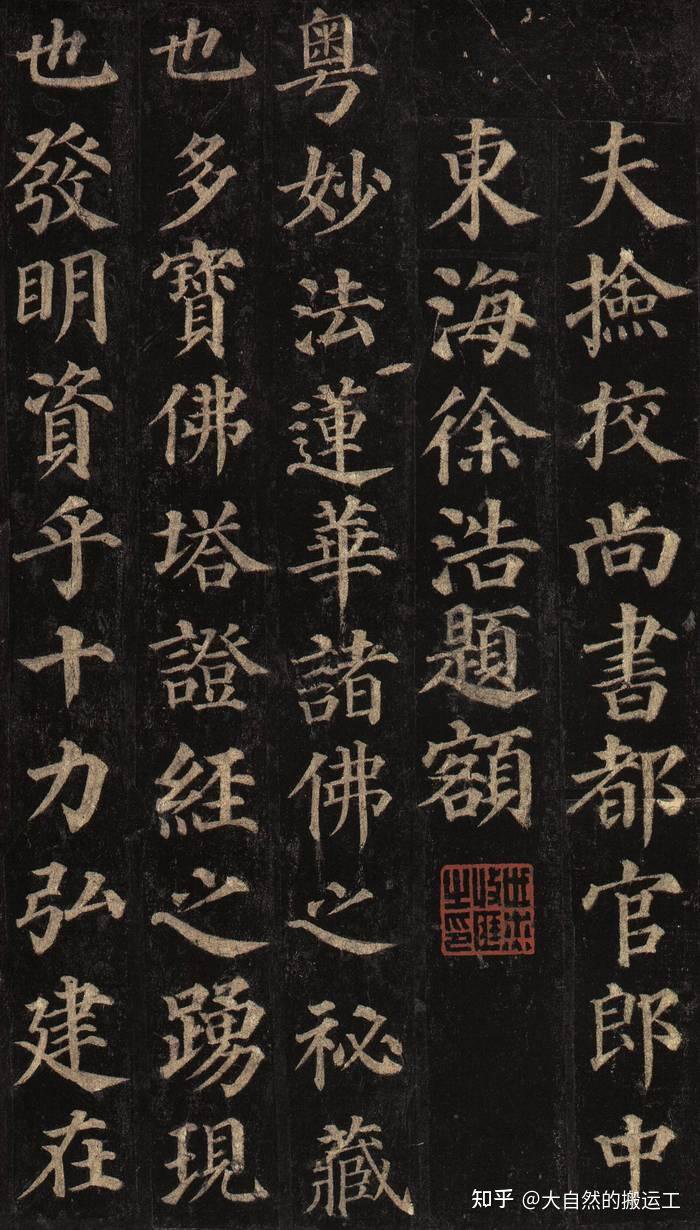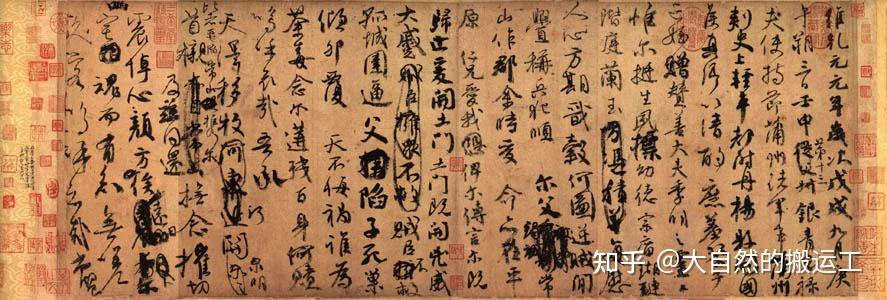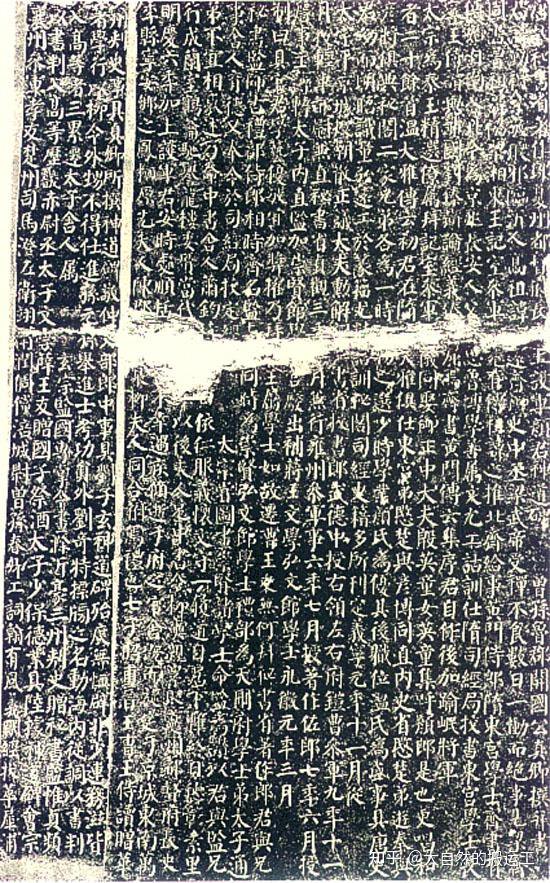
Su Shi once said: "The poetry reaches Du Zimei, the writing reaches Han Tuizhi, the painting reaches Wu Daozi, and the writing reaches Yan Lugong, and the changes in ancient and modern times have been completed by the world." Yan Lugong refers to Yan Zhenqing; during the Anshi Rebellion, Yan Zhenqing He had meritorious service in fighting against thieves. He entered Beijing and served successively as the Minister of the Ministry of Civil Affairs, the Prince and Grand Master, and the founding Duke of Lu County, so he was also known as Yan Lu Gong in the world.
1
Yan Zhenqing’s life
Yan Zhenqing (709-784), courtesy name Qingchen, was born in Jingzhao Wannian (now Xi'an, Shaanxi). His ancestral home was Langya Linyi (now Linyi, Shandong). He was a famous official and outstanding calligrapher in the Tang Dynasty. A descendant of the Langya family, Yan Zhitui, the fifth generation ancestor, was a famous scholar in the Southern and Northern Dynasties. He served successively in the Liang Dynasty, the Northern Qi Dynasty, the Northern Zhou Dynasty, and finally the Sui Dynasty. He wrote the "Yan Family Instructions". When Yan Zhenqing was young, his family was poor and lacked paper and pen, so he practiced calligraphy on the wall with a pen dipped in loess and water. He first learned Chu Suiliang's style of writing, and then learned his writing skills from Zhang Xu. He also absorbed the characteristics of the four schools of writing in the early Tang Dynasty, as well as the style of seal script and Northern Wei Dynasty. He completed the creation of vigorous and broad Yan style regular script and established a model of regular script in the Tang Dynasty. His regular script was contrary to the calligraphy style of the early Tang Dynasty. He used seal script to transform the thin and hard shape into plump and powerful. The structure was broad and majestic, and the bones were strong and majestic. This style also reflected the prosperous style of the Tang Empire. And consistent with his noble personality, it is an example of the perfect combination of the beauty of calligraphy and the beauty of personality. His calligraphy style is called "Yan style", and together with Liu Gongquan, he is called "Yan Liu", and he is known as "Yan Jin Liu Gu".
2
Masterpieces handed down from generation to generation
01
"Duobao Pagoda Stele"


Content of work
The full name of "Duobao Pagoda Stele" is "Duobao Pagoda Induction Stele of Qianfu Temple in Xijing, Tang Dynasty". It is 285 cm high and 102 cm wide, with 34 lines of text and 66 characters. Cen Xun wrote the article, Yan Zhenqing wrote the book, Xu Hao wrote the title, and Shi Hua published the stone.
The inscription narrates the process of Zen Master Chu Jin, a monk in the Tang Dynasty, who vowed to build the Duobao Pagoda and related Buddhist activities. Emperor Xuanzong of the Tang Dynasty once donated 500,000 pieces of silver and thousands of pieces of silk to erect the pagoda. After the death of Zen Master Chu Jin, Emperor Xuanzong of the Tang Dynasty sent a special envoy to express condolences, supervise the funeral, and personally wrote on the forehead of the pagoda.
Creative background
This stele was written by Yan Zhenqing when he was forty-four years old. It is an early and famous work. The writing is respectful and sincere, directly referring to the two kings, Ou, Yu, and Chu Yufeng. It also has obvious similarities with the scriptures written by the Tang Dynasty, which shows that Yan Zhenqing was writing to the people of the Tang Dynasty. While studying, senior calligraphers also paid great attention to absorbing nutrients from the folk art of calligraphy.
Characteristics of calligraphy
The whole article has a strict structure, with black silk borders between the lines, and the dots and strokes are round, dignified and beautiful. Every stroke and stroke appears to be moving in silence, and it is ethereal. Although this stele cannot be called the masterpiece of Yan Zhenqing's mature period, and has a very different style from the "Yan Family Temple Stele" and "Magu Xian Tan Ji" he later wrote, it is the first chapter of Yan's book and is Yan Kai's success. As the first step, most people who want to learn facial expressions start from this stele and enter into its secrets.
02
"Manuscript of Nephew Memorial"

Yan Zhenqing's "Manuscript of Memorials to Nephew", cursive, length 28.2 cm, width 72.3 cm, collected by the National Palace Museum, Taipei
Content of work
This manuscript was written in 758 AD. It narrates the story of Yan Gaoqing, the governor of Changshan, and his son's family, who stood up and resisted resolutely during the rebellion in Anlu Mountain. As a result, "the father was trapped and the son died, and the nest fell over." Ji Ming is the third son of Gaoqing and the nephew of Zhenqing. When his father and Zhenqing jointly fought against the Anlu Mountain rebellion, he traveled between Changshan and Pingyuan to deliver messages to connect the two counties and jointly serve the royal family. Later, Changshan County fell and Ji Ming was killed. Only his head was left when he was buried.
Creative background
When the bad news came, Yan Zhenqing was extremely sad. The "Anshi Rebellion" brought great personal disaster to Yan Zhenqing. In extreme grief and anger, Yan Zhenqing condensed his soul, collected blood and tears, and wrote the "Manuscript for Memorial to Nephew" which is recognized as "the second running script in the world". In this cursive manuscript, Yan Zhenqing poured out his uncontrollable emotions in the majestic and swift pen and ink. Because he did not neglect the pen and ink, he finished it in one go. There were many dry pens, and he became more and more indulgent in the later chapters. It not only conveyed the author's feelings The intense emotions also record this tragic historical tragedy for the family and the country.
Introduction to brushwork
The main center is round pen, and the hidden front comes out. The main center is round pen, and the hidden front comes out. In contrast to the lush, slender, graceful and charming style of "Two Kings", it has become a broad, natural and clear structure, with stipples extending outwards, arcs facing each other, looking and looking, and the form is scattered but the spirit is convergent. The flow of energy between the characters changes according to the mood, regardless of clumsiness and unintentional intention. Punctuation and deletions can be seen everywhere. In the undressed writing, it is vivid and changeable. There are many thirsty pens, and the ink color is thick and dry. In this authentic manuscript, all the places where the pen is drawn and where it is pulled are clearly visible. It allows people to see the process of writing and the wonderful changes in the strokes, which is of great benefit to learning cursive calligraphy.
03
Magu Immortal Altar Story

A reprint of Ming rubbings from the National Palace Museum in Taipei (large-character edition)
Content of work
Yan Zhenqing wrote in April of the sixth year of the Dali calendar (771), when he was sixty-three years old. The full name is "The Immortal Altar of Magu Mountain in Nancheng County, Fuzhou, Tang Dynasty". It is an important work by Yan Zhenqing in his later years. Magu is a famous Taoist fairy who serves the Queen Mother of the West in Yaochi.
Creative background
In April of the sixth year of the Dali calendar, Yan Zhenqing was serving as governor of Fuzhou. Due to setbacks in his official career, he turned to Taoism and Buddhism. He visited Magu Mountain in Nancheng County and wrote an article about Magu's attainment of Taoism and immortality. The inscription was engraved in Nancheng, Jianchang Prefecture, Jiangxi Province. The top of the mountain twenty-two miles southwest of the county.
Introduction to brushwork
The inscription is vigorous and simple, with straight bones and straight lines. The changes in line thickness tend to be gentle, and the strokes have few twists and turns. When using the pen, it has a "silkworm head and swallow tail", and many of them have the meaning of seal script. Due to the thick lines of the structure, in order to leave a margin in the middle of the character to avoid congestion, it had to try its best to expand to the surroundings, and the writing method of external expansion was pushed to the extreme.
04
Yan Qin Monument

An early rubbing from the collection of the Palace Museum in Beijing
Content of work
"Yan Qinli Stele" has inscriptions on four sides, three of which are extant. There are 19 lines on the top of the stele, 20 lines on the bottom of the stele, with 38 characters in each line. There are 5 lines on the side of the stele, with 37 characters in each line. The inscriptions trace the merits of the Yan family's ancestors and describe the achievements of future generations in the Tang Dynasty. .
"Yan Qinli Stele" is Yan Zhenqing's masterpiece in his later years. It was a Shinto stele written by his great-grandfather Yan Qinli in the 14th year of Dali of the Tang Dynasty (779).
Creative background
Introduction to brushwork
The brush is thin horizontally and thick vertically, hiding the head and protecting the tail, using both square and round shapes; the structure is dignified and generous, broad and stretched, showing skill in clumsiness; the breath is strong, powerful and full of vitality, which represents the aesthetic style of the prosperous Tang Dynasty.
【statement】
Pictures and part of the copy are from the Calligraphy Space website http://www.9610.com
Calligraphy School to help you set sail!
Welcome to follow the Calligraphy Qihang official account and join the MOOC course!








